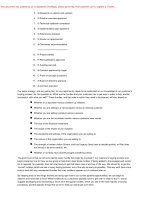A politeness strategy in expressing sympathy by american and vietnamese speakers
Bạn đang xem bản rút gọn của tài liệu. Xem và tải ngay bản đầy đủ của tài liệu tại đây (1.41 MB, 8 trang )
A politeness strategy in expressing sympathy by
american and vietnamese speakers
Tạ Thị Thanh Hiền
Trường Đại học Ngoại Ngữ
Luận văn ThS. Chuyên ngành:Linguitics; Mã Số: 60 22 15
Người hướng dẫn: Prof. Assoc. Tran Huu Manh, PhD
Năm bảo vệ: 2010
Abstract: This study investigates the politeness strategies employed by American and
Vietnamese native speakers expressing sympathy. It attempts to seek what politeness strategies
Vietnamese and American speakers use in expressing sympathy, and then how Vietnamese
teachers and learners should acquire politeness strategy. The data was analyzed using a
Discourse Completion Test (DCT) and basing on the models proposed by Blum-Kulka, et al
(1989) including three dimensions: the Head Act, the Internal modifications and External
modifications.The findings show that the American speakers used more external modifications.
Differently, Vietnamese people were more indirect and used many different types of external
modifications. Also it was found that a variety of internal modifications were exploited by
American speakers from the interrogative, modals, intensifier, subjectivizers to downtoner,
commitment upgrader while Vietnamese people used more external modifications with
explanations or advice. On the basis of the findings, certain implications for the teaching and
learning language functions were proposed, limitations were pointed out, and further research
was suggested.
Keywords: Tiếng Anh; Người mỹ; Người Việt
Content:
5
TABLE OF CONTENT
CHAPTER 1: INTRODUCTION 1
1.1. Background and significance of the study … 1
1.2. Objectives …………………………………. 2
1.3. Overview of the study………………………. 2
CHAPTER 2: LITERATURE REVIEW 4
2.1. Speech acts …………………………………. 4
2.2. Politeness…………………………………… 7
2.2.1. Theory of politeness………. 7
2.2.2. Social factors affecting politeness …………………………………8
2.2.3. The notion of face ……………………………………………… 9
2.2.4. The notion of positive and negative politeness……………… …….9
2.3. Directness and indirectness………………… 10
2.3.1. Direct speech acts…………. 10
2.3.2. Indirect speech acts………… 11
2.4. Cooperative principles………………………. 12
2.5. The speech act of comfort…………………. 14
2.6. Politeness in expressing sympathy………… 14
2.7. Sympathy and antipathy…… ………………………………………… 17
CHAPTER 3: METHODLOGY 19
3.1. Research methods of the study…………… 19
3.2. Research questions…………………………. 19
3.3. Research design…………………………… 19
3.3. 1. Selection of subjects………. 19
3.3.2. Data collection instruments…… 20
3.3.3. Data collection procedure…. 23
3.4. Analytical framewor………………………… 24
3.4.1. Internal modification………. 24
3.4.2. External modifications……. 25
6
3.4.3. The Head Act formula……. 26
CHAPTER 4: ANALYSIS AND DISCUSSION 29
4.1. The choice of strategy………………………. 29
4.2. The choice of External modification or Supportive Moves 30
4.3. The internal modifications……………………… ………….31
4.4. The realization of sympathy expression……… 32
4.5. Summary of major findings…………………. 33
4.6. Discussion of findings……………………… 34
CHAPTER 5: CONCLUSIONS AND IMPLICATIONS 37
5.1. Conclusion…………………………………… 37
5.2. Implications…………………………………………………………… 38
5.3. Suggestions for further study……………… 39
REFERENCES 40
APPENDIX A I
APPENDIX B IV
APPENDIX C VIII
APPENDIX D………………………………………………………….…….XII
9
PART A: INTRODUCTION
1. Background and significance of the study
English has been one of the compulsory subjects in Vietnamese universities for
many years. However, the tendency in teaching and learning English has placed a great
emphasis on communicative competence. That means it requires the learners to be able
to use the language grammatically, appropriately ad effectively. In other words, the
learners must have the ability to say the right thing in the right situation in order to get
what they want. Nevertheless, the process of teaching and learning in Vietnam,
communicative competence has been paid little attention. Therefore, learners have
difficulties in oral communication though they can read or write well. Furthermore,
since the open door policy and recent social development, more and more Vietnamese
people have been now working in foreign companies and have to speak English in their
work; the need for oral communication in English is increasing. Apart from the
grammatical and lexical knowledge, much awareness in verbal communicative
competence has been paid attention to. In addition, in order to achieve the
communicative goals and avoid misunderstandings, learners have to develop a sense of
socio-cultural appropriateness. However, despite this increasing emphasis on sealing,
both teachers and learners still have difficulties in direct interaction with foreigners due
to the lack of knowledge of when, how and to whom to say what.
With an aim to improving learners’ communicative competence, there have
been many English and Vietnamese cross-cultural studies on the realization and the
usage of such speech acts as thanking (Tam, 1990), offering (Lan, 2000), apology (Van,
2000), inviting (Hien, 2002), prohibiting (Thuc, 2001), etc. Those studies have shown
similarities and differences in the selection of the strategies and the distribution of
linguistic element.
Further, Vang’s study (1990) in requests raises some significant concerns in
cross- cultural issues relating to request. His study shows that there are potential
differences in perspective and the use of politeness strategies in making requests
between Vietnamese subjects and Australian ones which are relevant to Vietnamese
learners of English.
10
Similarly, in a study on complaining; Hanh (2003) pointed out the similarities
and differences in formulation of the speech act of complaint with respect to the use of
complaint strategies, directive acts and external modifiers. IT also showed a variety of
differences between Vietnamese speakers and Australian speakers. It concludes that
complaints can be realized in a great variety of forms depending on a particular context.
These studies have provided some significant insights in to both the problems
Vietnamese learners of English as well as area where Vietnamese learners have fewer
difficulties.
However, to date a study on politeness strategies of sympathy expressions in
American and Vietnamese has not yet been adequately investigated. Therefore, the aim
of this study is to compare the realization of the speech act of sympathy by Vietnamese
native speakers and the American speakers in order to fill in the gap in research in this
area.
This study concentrates on answering the following questions:
1. What politeness strategies do Vietnamese speakers use in expressing sympathy
in the contexts studied?
2. What politeness strategies do American speakers use in expressing sympathy in
the contexts studied?
2. The scope of the study
This study is aimed at comparing sympathy expressions in Vietnamese with
those in English with particular references to the theory of speech acts. Besides, it is to
uncover differences in sympathy expressions of the two populations in terms of
linguistics.
The study focuses mainly on verbal communication and the analysis of the data
collected from the survey questionnaire on expressing sympathy. The target groups
who express sympathy are common American and Vietnamese speakers in all situations
from work to private home. Further, the study is confined to ten selected situations. In
such situations, the Speaker is familiar with the Hearer.
3. The organization of the study
The study is divided into three main parts
PART A INTRODUCTION introduces the background, the significance, the objectives
and the design of the study.
11
PART B DEVELOPMENT focuses on the theoretical issues related to the topic of the
study. Firstly, it presents and discusses the issues of speech acts and the speech act of
comfort including the theory of politeness. Then the notions of directness and
indirectness in sympathy together with the matters of the conversational maxims, the
cooperative principles are dealt with.
It also presents the research questions and the design, the research methods including
the selection of subjects, data collection instruments, the procedure of the data
collection, and finally analytical framework of the study.
Besides, this part reports some findings on the strategy and the choice of external and
internal; modifications as well as the sympathy expression realization in relation to the
variables of Power, Social Distance and Ranking of seriousness in the context studied.
PART C CONCLUSION offers an overview of major findings and implications for
ELT in Vietnam and suggestions for further research.
48
REFERENCES
1. Austin, J.L.(1962). How to do things with words. New York: Oxford University
Press.
2. Blum-Kulka, S.s, & House, J., & Kasper, G. (1989). Cross-cultural and situational
variation in requesting behavior. In S.Blum-Kulka/J.Houae/G.Kasper (Eds.), Cross-
cultural pragmatics: Requests and apologies (pp123-154) .
3. Brown, G. &Yule, G. (1983). Discourse Analysis. Cambridge University.
4. Brown, P. & Levinson, S.C. (1978). Politeness: some universals in language usage.
Cambridge University Press.
5. Brown, P., & Levinson, S.C. (1978). Universals in language usage: Politeness
phenomena. In E. Goody (Ed.), Questions and politeness: Strategies in social
interaction (pp. 56-289). Cambridge: Cambridge University Press.
6. Cohen, A., & Olshtain, E. (1996).Developing a measure of sociocultural
competence: The case of apology. Language Learning, 31 (1), 113-114.
7. Cohen,A.D., & Olshtain, E. (1993). The production of speech acts by EFL learners,
TESOL Quarterly, 27 (1), 33-35
8. Goffman, E. (1967). Interaction ritual: essays on face to face behaviour: Garden
City, New York.
9. Green, G.M. (1989). Pragmatics and Natural Language Understanding.
10. Grice, H.P. (1975). Logic and Conversation. In P.Cole./J.L.Morgan (Eds.), Syntax
and Semantics 3: Speech Acts (pp.41-58). New York: Academic Press.
11. Holmes, J. (1984), Modifying illocutionary force, Journal of pragmatics, 8, 345-
365.
12. Le, N.T. (1999). A cross-cultural study on advising in English and Vietnamese, MA
Thesis, Hanoi National University.
13. Kerbrat-Orecchioni, C. (1997). “A multilevel approach in the study of talk-in-
interaction”. Pragmatics 7(1): 1-20.
14. Leech, G. (1983). Principles of pragmatics. London: Longman.
15. Phuong, T.T. (1999). A cross-cultural study of Apology and responding to
apologies in English and Vietnamese. MA thesis, Hanoi National University.
16. Levinson, S.C. (1983). Pragmatics. Cambridge University Press.
49
17. Richards, J.R. & Schmidt, R.W. (1983). Language and communication. London:
Longman.
18. Searle, J.R (1969). Speech Acts. Cambridge: Cambridge University Press.
19. Searle, J.R (1990). A classification of illocutionary acts. In D. Carbaugh (Ed.),
Cultural Communication and intercultural contact. Hillsdale, New Jersey, Hove and
London: Lawrence Erlbaum Associates Publishers.
20. Schmidt, R. (1983). Interaction, acculturation, and the acquisition of
communicative competence: A case study of an adult. In N. Wolfson & E. Judd (Eds.),
Socio-linguistics and language acquisition (pp. 237-274).Rowley, MA: Newbury
House.
21. Tam, N.B. (1990). Politeness formulae, In U. Nixon (Ed.), Discourse analysis
papers. Canberra: Canberra University.
22. Tam, H. C. (1998). Request in Australian native speakers of English and
Vietnamese learners of English. MA thesis, Hanoi National University.
23. Thao, T. X. (1990). Inviting in Vietnamese and Australian English. In U. Nixon
(Ed.), Discourse analysis papers. Canberra University.
24. Thomas, J. 1995 Meaning in Interaction: An Introduction to Pragmatics. Longman
Group Limited.
25. Vang, N.X. (1990). Requests. In U. Nixon (Ed.), Discourse analysis papers.
Canberra: Canberra University.
26. Yule, G. (1996). Pragmatics. Oxford: Oxford University Press.









